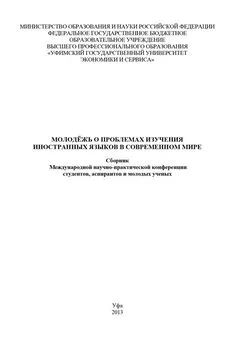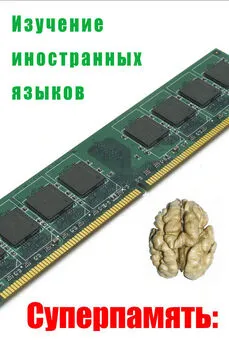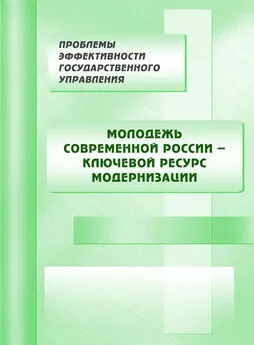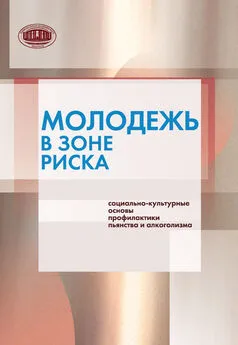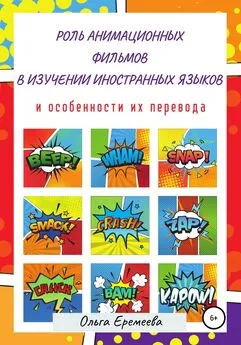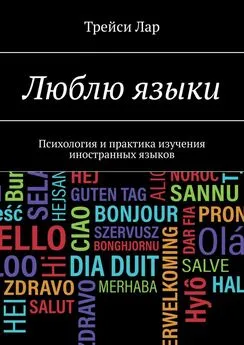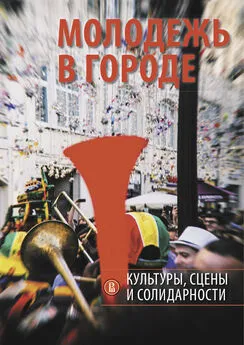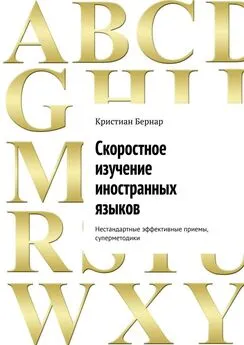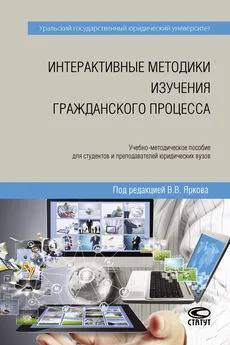Коллектив авторов - Молодежь о проблемах изучения иностранных языков в современном мире
- Название:Молодежь о проблемах изучения иностранных языков в современном мире
- Автор:
- Жанр:
- Издательство:Литагент БИБКОМ
- Год:2013
- Город:Уфа
- ISBN:978-5-88469-630-3
- Рейтинг:
- Избранное:Добавить в избранное
-
Отзывы:
-
Ваша оценка:
Коллектив авторов - Молодежь о проблемах изучения иностранных языков в современном мире краткое содержание
Молодежь о проблемах изучения иностранных языков в современном мире - читать онлайн бесплатно ознакомительный отрывок
Интервал:
Закладка:
There are so many linguistic features which the languages of the world share. Some are basic, such as the notion of ‘sentence’ or ‘verb,’ some are complex, such as Wh- movement. The rules which all languages have in common, with either very few, or no exceptions are called absolute universals. Let’s consider the following statements.
• All languages are equipped with the grammatical structures needed to give orders, negate a thought, and ask a question.
• All languages use verbs which reflect the past, present, or future.
• All languages possess a finite set of phonemes (sounds) including vowels and consonants which are strung together to form words.
• All languages share the basic categories of words, such as nouns, verbs, description words, relative clauses, and a method for counting.
• All languages use pronouns.
• All languages include any blend of or subcategory of the basis five colors: red, blue, yellow, black and white. The colors which are included in every language are red, white, and black [3].
To sum up, we must say that Language Universals are unique in starting with the assumption that the best way to approach these and related questions is through a dialogue between a wide range of disciplines, including linguistics, cognitive neuroscience, philosophy, computer science and biology.
1. Comrie 1981: 24. The languages of the Soviet Union
2. Comrie 1981: 25. The languages of the Soviet Union
3. Chomsky, N. (1988). Language and problems of knowledge. Cambridge, Massachusetts: MIT Press
MYSTERY AND DIFFICULTY OF TRANSLATION
УДК 81’25=111
FAZYLOV A.
Ufa State University of Economics and Service (Ufa)
Even a professional translator is faced a number of objective difficulties that have to be considered. Many people believe that translation as transfer of words one language into another language cannot be precise and good. There are many reasons for that [1]:
1) The discrepancy between material objects or their verbal expressions. In general, the reality in which we live is different from the one in which speakers of others language live;
2) The discrepancy between a number of meanings of the same words in different languages;
3) Different collocability and idiomatic expressions;
4) The un-translatable dialect words and jargon;
5) Untranslatable realiae.
Meanwhile, the translation hide a few pitfalls. Among them are false friends of a translator. They are words similar in sound and spelling to the words of the target language, but very different in meaning. Once of perfume company Clairol introduced in Germany its deodorants, using Slogan “Mist Stick”. It turned out that the German word “Mist” is slang for “manure”.
Significant challenges for the translator are also the proper names. For example, the Russian name of the U.S. state of Texas is –Техас- is neither a translation (otherwise it would be “Тексас”), nor transcription (“Тэксес”). It is a historical form of translation.
Moreover, the translation in general, and in the translation of proper names in particular, we are faced with a problem of euphony. Coca-Cola Company could’t find the brand name to sell their products in China for long time. The Chinese pronounce____ the name of the drink is “kekukela” meaning “Bite Waxy Tadpole”. The company had to go over 40 thousand options before choosing the name “Koka Kole”, which means “Happiness in the Mouth”.
It is worth nothing that there are a number of historical errors that it is impossible to correct. They have become part of the language and part of history. For example travelers who were the first to visit Australia asked Aboriginal people “What is that animal?” And those, without understanding them, answering in their own language, We do not understand”, which sounded like “kangaroo”. And travelers decided that this name of the animal.
We must be very attentive to the author’s text when we translate poetry. But in the process of translation there appear such obstacles like phonetic, vocabularystylistical and grammatical differences [3].
All these have an influence on the translation. The sentence passed through various traditions, attitudes and minds can be different from the original [2].
For the dame reasons, automatic translator can translate text only literally. There is still of work to modernize translation programs. Every year new programs appear and old programs are modernized, but they can’t still reproduce every sense of the text.
1. Заикин Е. Трудности перевода // 02 июня 2010. http://blog.perevedem.ru/2010/06/02/trudnosti-perevoda-i/
2. Вартанян Э.А. Путешествие в слово, 1976.
3. Трудности перевода поэтического текста (пять переводов стихотворения П. Валерина «Марина»), Кокорина А.В., 21-09-2011.
ORNAMENT AS PEOPLE’S MOST CLASSICAL LANGUAGE
УДК 7.04:81
IMANGULOVA F.
Ufa State University of Economics and Service (Ufa)
Language and communication.
Language is the system of verbal expression of thoughts. But there is a question, whether the person can think without resorting to the help of the language? The majority of researchers believe that thinking can exist only on the basis of the language and actually identifies language and thinking.
German linguist Augustus Shleykher considered that thinking and language are as identical as the contents and the form.
Russian-American linguist Roman Yakobson explains these by the fact that signs – necessary support for thought, but the internal thought, especially when thought is creative, willingly uses other systems of signs (nonverbal), more flexible among which conditional standard and individual (both constant, and incidental) can be met [1].
Ornament language.
Ornament is one of the most ancient forms of graphic activity of the person, known since the paleolith. In Latin "ornament" means "pattern". Initial images were artless: branch, the splinter of the cockleshell which was carried out on crude clay, or the seeds of plants pressed into it. Over time real seeds were replaced with their images. Already during a neolith era the ornament of ceramics represented not a casual set of strokes, strips, hyphens, and thought over, in composition the verified drawing filled with the symbolical contents [2].
Really, a language basis, an organizing kernel and the most important substantial element of complete system of culture, a form of transfer of centuries-old experience, socio-cultural values and meanings, means of expression of cultural identification, communication in information society are signs and symbols. They participate in forming texts of culture as which sign systems both the spiritual and the material world can be considered. Ability "to read out" these texts becomes a basis of mutual understanding, forming of dialogue and compromise search for tolerant coexistence of various traditional communities.
And one of the universal languages of culture which contains deep layer of ethnic memory of people, archetypes of their attitude, specifics of mental features, traditional arts and crafts in which the special place occupies an ornament are [3].
"Any ornament we read like a book because in it there is "alphabet", thoughts, plots, history, the relation to the world. And the language of symbols, lines, colors, a rhythm it speaks about people: what it, what temperament at it, character, destiny. Ornament is not simply an ornament. Often it contains certain constant image which is transferred from generation to generation. Except esthetic function, ornament has also a symbolical function. Without it it is like a house without icons. Since pagan times in ornaments there was some kind of prayer. For example, the tradition is known to put on certain clothes on a certain holiday and only with such embroidery. So, during sowing Slavic sowers put on shirts with a rhombic ornament since it symbolized the sowed field and, naturally, it was inadmissible to put on something another," – notes Konstantin Klimov, the chair of the department of history of arts of UDGU, a doctor of art, a professor.
On embroidery on an apron or a shirt of the Udmurt woman it was possible to learn a lot of things: from what villages it is, how many children she had, and from the costume as a whole – her age, family status, social status.
Rhombus – an order wish to the good owner, the sowed field or information on number of sons. Later rhombus is a gingerbread, a prosperity symbol. The circle, semicircle, a rhombus with radial beams or a cross – a sun symbol, preserved against evil ghosts, "kuak" – a heavenly tree of life and preserved against a malefice and diseases. In the 15th century on female bibs (kabachi) there is a moon symbol – an eight-final star with diamond-shaped beams without which it was impossible to play weddings. In Israel such sign is known since the 1-3rd centuries [4].
In the Buryat culture, as well as in the majority of traditional cultures, the ornament is the most ancient type of graphic designs. At the Buryat all was exposed to Ornamentation practically: clothes, jewelry, house utensils, dwelling, cult subjects, weapon and many other things. Value and relevance of this universal language is defined not only a special role of an ornament in traditional culture of Buryatia, but also and that the ornament can be considered in synthesis of sacral value and symbolics in a context of verbal and nonverbal communications [5].
Bashkir ornament.
For the Bashkir ornament – are characteristic as geometrical, and it is curvilinear – vegetable patterns. The form depends on execution equipment. Geometrical motives, are executed in equipment of calculating embroideries and in weaving. Curvilinearly – vegetable – in equipment of application, a stamping, a silver notch, in equipment of free embroideries (the platform, or "a slanting grid"). Usually patterns were put on a tree, skin, metal, a cloth. Ornamentation receptions are diverse: carving and list on a tree, a stamping and a carving on skin, metal processing, application, abusive and mortgage weaving, knitting, an embroidery.
The Bashkir ornament – one of the phenomena of the national Bashkir culture, the originality which has reflected it and peculiar features. The ornament for the Bashkir people was the only form of art and graphic creativity. Almost total absence in the Bashkir folk art of realistic images of animals, people and landscapes was caused by influence of Islamic culture, namely – a ban of Islam to represent the live. Islam not only excluded from art all other images, except an ornament, but also defined an extreme stilizovannost of its form, distribution of a geometrical ornament. Nevertheless, northern areas of the Muslim world knew broad application of images of animals in an ornament, a thicket stylized, and sometimes even rather realistic character.
The Bashkir ornament (both separate elements, and all composition) is almost always symmetric. The whole world contains the phenomena only in opposition: day – night, life – death, light – darkness, man's – female, left – right, etc. It is shown through symmetry of resisting figures of animals. In order that contrasts in mutual fight didn't destroy each other, the third element of composition, their differentiating – golden mean, a reference point, the symbolical image of an axis of the world is necessary. Thus, in an ornament ancient ideas of a triple rhythm of life, characteristic for the majority of the people were reflected.
Читать дальшеИнтервал:
Закладка:
